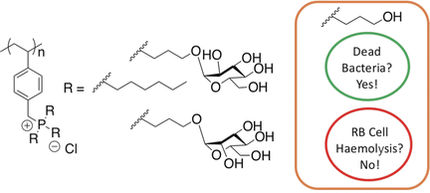Integral Role As Life-Sustaining Technology Drives Demand for New Critical Care Antibiotics
Advertisement
antibiotics play a vital integral role as one of the life-sustaining technologies. Critical care antibiotics are also responsible in bringing the patient to a stable condition for better management. With the expanding spectrum of pathogenic strains resistant to conventional antibiotics, the critical care antibiotics industry is stimulated to invest heavily in new antibiotic introductions and pipelines.
New analysis from Frost & Sullivan U.S. Critical Care Antibiotics Markets, reveals that the industry generated revenues totaling $3.14 billion in 2002 growing at 4 percent and is expected to maintain a similar momentum for the next few years.
"A combination of factors - weak patient immune systems, higher risk of pathogen transmission in hospitals, and increase in conditions requiring critical care are causing the spread of hospital and community acquired serious infections," says Frost & Sullivan Research Analyst Raghunath Tantry.
Large-scale use of antibiotics to combat these hospital and community acquired infections is leading to bacteria developing resistance, which, in turn, is driving demand for newer and more efficient critical care antibiotics.
Stringent guidelines, including the Food and Drug Administration directive to doctors to avoid prescribing inappropriate antibiotics is aimed at controlling the increase in bacterial resistance, and total costs of hospitalization.
Many hospital-treated infections often require both microbiological cultures of the causative pathogens and sensitivity disc tests to assess pathogen susceptibility to specific antibiotics before starting therapy. The growing dependence of such diagnostic tests are likely to lead to more demand and selection of narrow-spectrum, least toxic and easy to administer antibiotics.
Critical care antibiotics do not face all the restraints of community-based antibiotics since they are usually administered under supervision and managed care of serious conditions. The decision to prescribe an antibiotic is based on criticality of the situation and the available alternatives.
Studies by the Agency for Healthcare Research and Quality indicate that preventive antibiotic therapy and many new antibiotics can prove more cost-effective.
"Companies that are successful are highly focused in hospital critical care promotion of their antibiotic brands, offer a wide range of injectable packs and make efforts in having an oral range for step-down therapy for the discharged patient," says Tantry.
Frost & Sullivan is a global leader in strategic growth consulting. This ongoing growth opportunity analysis is part of the Pharmaceuticals Monitor Service, which also includes market insights on the U.S. Asthma Therapies Markets, and the U.S. Pulmonary Drug Delivery Therapies Markets.





























































